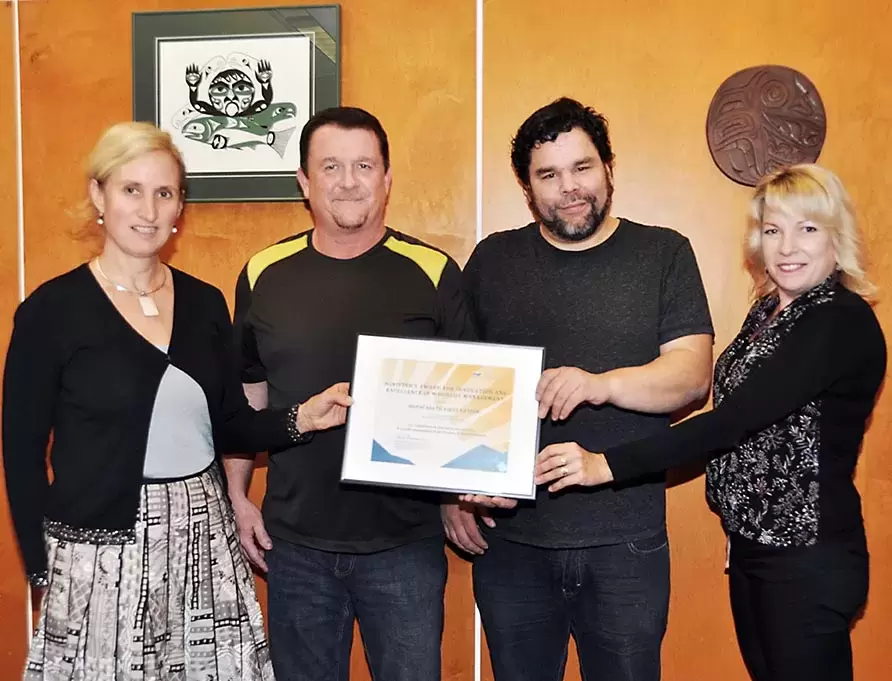Hupacasath First Nation has earned the Minister’s Award For Innovation and Excellence In Woodlot Management for 2016.
The award, which included a cheque for $2,500, was presented to Hupacasath Chief Councillor Steven Tatoosh and forest resource manager Warren Lauder on Oct. 27.
It is the first time the B.C. Forest Ministry has honored a First Nation operation, according to South Island Natural Resource District Manager Rhonda Morris.
“This award was put in place to recognize excellence in woodlot management,” Morris said. “This year, there were winners in the North, the South and the Coast areas. And for the Coast, Hupacasath was the winner.”
Hupacasath was nominated by David McBride, operator of Greenmax, which is situated near the Hupacasath Woodlot 1476 (Sproat Lake).
The Nation also operates Woodlot 1902, at the head of Burde Street, in Port Alberni, as well as a First Nations Woodland License at Great Central Lake.
All told, there are 860 woodlots (maximum 800 hectares) across the province, with 26 located in the South Island District.
Lauder said woodlot management covers a wide range of responsibilities. Woodlot 1402 has an annual allowable cut of just under 5,000 cubic metres of timber, while Woodlot 1476 has a harvest of about 3,800 cm3.
“In a woodlot, you’re involved in the whole spectrum of management,” he explained.
Many of those small holdings, like 1402, are located in the “urban interface.” That means operators must manage for recreational and wildlife values, as well as for homeowners, powerlines, water licenses, etc.
“We have the Log Train Trail running through the woodlot,” Lauder said. “We’ve had lots of conversations with the Log Train Trail Society, covering a lot of issues such as bridges, steps and walkway paths.”
“We have also re-invested some of the profits to help with the recreational values,” Tatoosh added.
The harvested timber is sold to brokers who in turn find the most appropriate markets at the best price.
Tatoosh noted that, because woodlots work under a mandate of sustainable harvesting methods, they make good neighbors. Hence, recreational users are welcome to hike the trails, and in some cases, serve as an extra set of eyes for the operators.
That spirit of cooperation extends to other woodlot operators. Currently, Hupacasath is gearing up to produce commercial quantities of maple syrup, tapping into the native Bigleaf maple trees in the Alberni Valley.
“Last year, we did some [tapping] in the woodlots and on the reserve, as a trial run,” Lauder said. “We want to branch out. But because we have done an inventory on all the woodlots, we know where those maples are.”
“And Greenmax has some huge stands of maple adjacent to us,” Tatoosh said. “They have invited us to come in, so we could sign an agreement to tap trees on their woodlot.”
Lauder said non-timber resource rights (such as maple sap for syrup) are guaranteed under the First Nations Woodland License system.
Hupacasath members can take pride in receiving the Minister’s Award, Lauder said.
“We take our forestry seriously. It’s something that we fought hard to get to, and now we’re on the landscape. You can’t be true stewards of the land unless you’re on the landscape.
“As for being the first First Nation to achieve it, I believe it paves the way for other First Nations to show that we can be excellent stewards of the land.”







